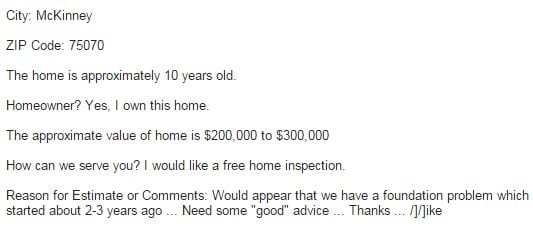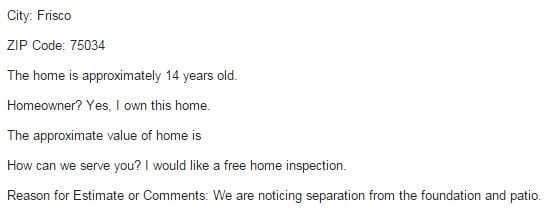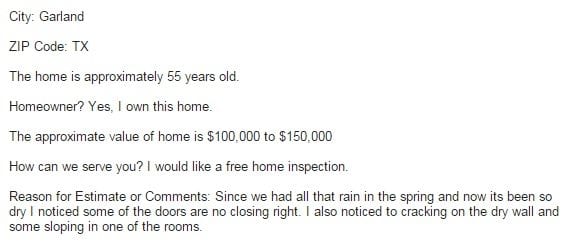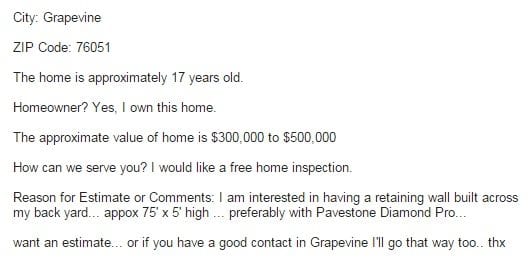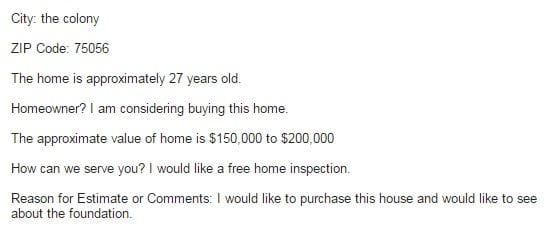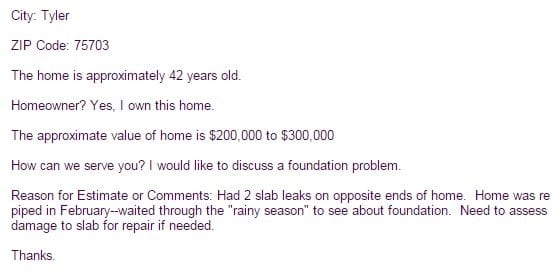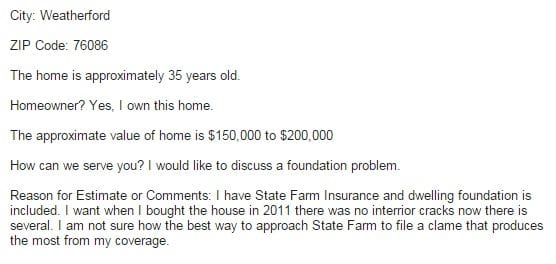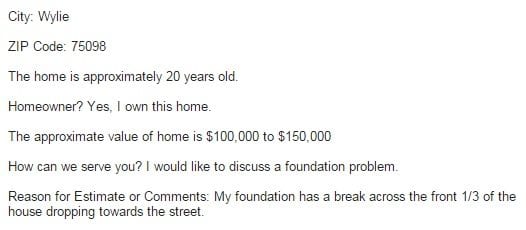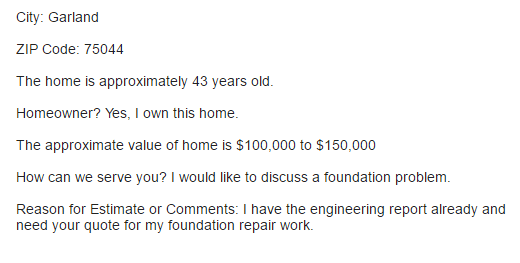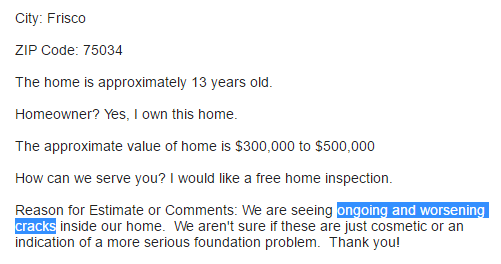Below are partial images of emails from Dallas area homeowners that illustrate the most Common Foundation Problems in Dallas page 3. We have added our comments where we thought it might be beneficial. The point we wish to make is that many homeowners in your area are experiencing foundation issues.
We are not surprised that this McKinney home started showing warning signs of foundation damage when it was only 7 or 8 years of age. Unfortunately for the homeowner, the builder warranty has expired. We would be happy to give Mike our best advice.
This is another Dallas home with foundation issues due to soil movement.
This Frisco home may have a tree or two with roots growing under the patio. If so, the solution is to install root barriers. If not, then the slab foundation and home may need an inspection.
This Garland home is experiencing dramatic soil movement. The clay soils expanded in volume when they were saturated by the heavy rains and then they shrank dramatically in volume when the hot, dry summer arrived. This dramatic expansion and contraction has probably cracked the home’s foundation in several places.
Retaining walls are important when the landscape presents drainage and / or erosion problems.
We inspect slab foundations in The Colony.
Unfortunately for this Tyler homeowner he has completed plumbing work before doing the foundation work. If the foundation needs support piers and leveling then the process can and often will damage plumbing pipes. The homeowner would then have to repair the under slab plumbing pipes again.
Unfortunately for this Weatherford homeowner virtually every insurance company will deny his insurance claim. These companies know that soil movement is a risk factor for every home in the eastern half of Texas. The insurance companies also know that most home builders in Texas build Minimally Functional Foundations.
If this Wylie home is experiencing settlement and sloping then he has a significant problem. The homeowner needs a professional foundation inspection.
This is another wise homeowner who decided to obtain a foundation inspection from an independent structural engineer. We support this decision because we feel that homeowners should have access to the opinions of independent professionals. That is why we include a number of articles and reports from different structural engineers on our website. Please read some of them to understand the advantages and disadvantages of different foundation repair methods.
This house is 13 years old and the owner is “seeing ongoing and worsening cracks”. This is a typical situation in Texas because most slab foundations for homes are simply too thin to resist the expanding and contracting clay soils for an extended period of time. Most homes will see foundation damage and interior and exterior walls cracks within 10 to 20 years. Some homeowners begin seeing this damage on homes that are LESS than 5 years of age. These are homes built with minimally functional foundations.

